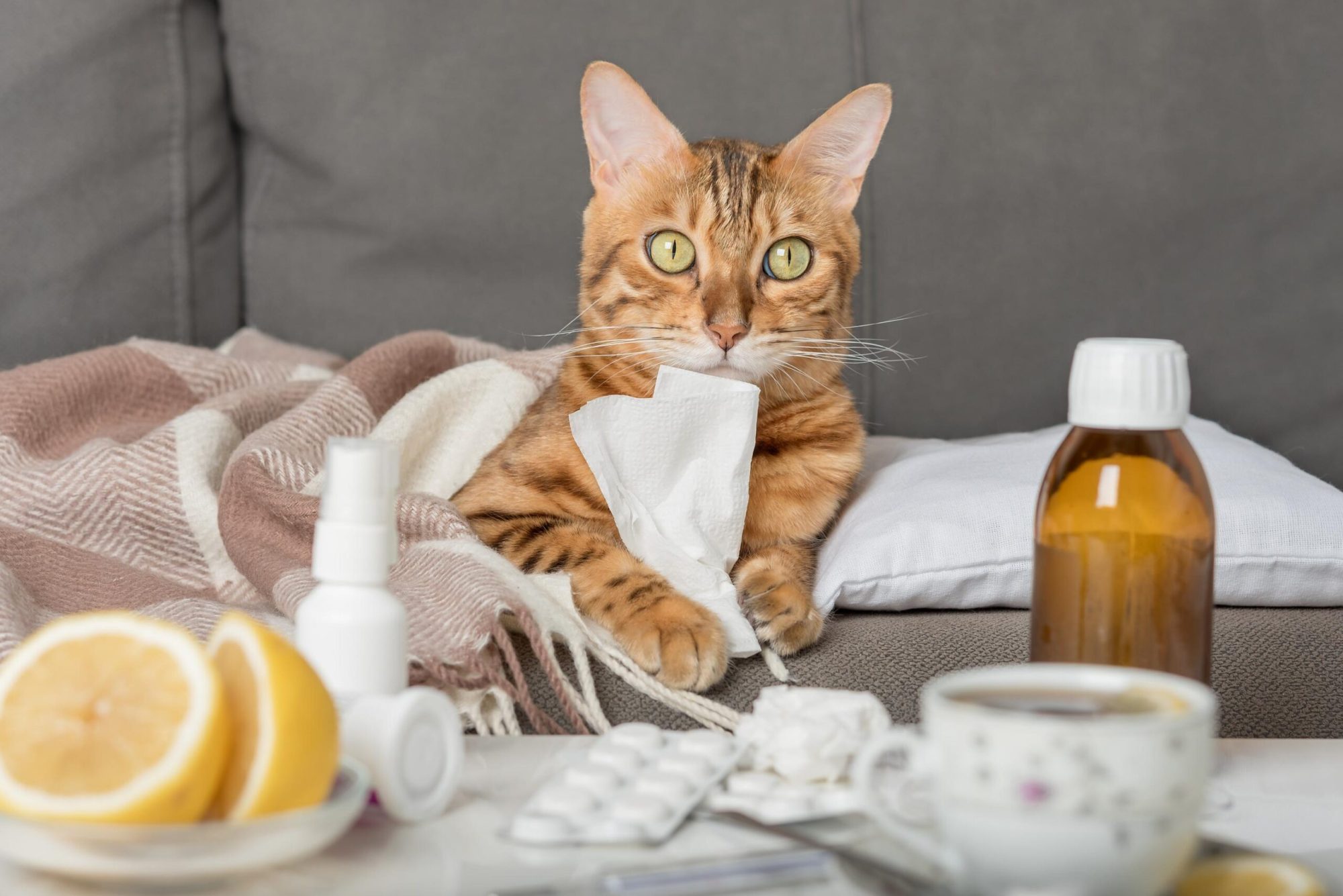Nose and Sinus Infections in Cats

Nose and sinus infections in cats are common and they’re responsible for inflammation, pain, and various complications. Causes and severity of nose and sinus infections vary considerably, but one thing is constant: the need for immediate veterinary care and treatment.
What We’re Talking About
Nose and sinus infections in cats are, well, nothing to sneeze at. In fact, serious health complications can arise as a result of untreated infections of the nasal passages and surrounding tissue. Because pathogens that enter the body through the airway can spread and multiply, it is vitally important to know the signs of a potential nose or sinus infection and seek treatment.
Focusing the Lens
Nasal infections in cats can be fungal, viral, or bacterial. They can also be caused by parasites, dental disease, allergies, or various foreign bodies. Some cases are acute and need treatment for a specific amount of time. Others are more chronic in nature, resulting in numerous, recurrent episodes over time.
Rhinitis and Sinusitis
Feline rhinitis and sinusitis can happen concurrently, stemming from upper respiratory disorders. Rhinitis is characterized by inflammation of nasal passage; sinusitis is the result of inflamed sinuses.
When the mucous membranes of the nose become inflamed and breathing becomes labored, feline rhinitis and/or sinusitis may be the cause. While these cases can resolve independently, they can also worsen over time and last for life. Left alone, cats may be vulnerable to secondary bacterial or viral infections that exacerbate symptoms. Viral infections, such as feline herpesvirus or feline calicivirus, have the potential to cause upper respiratory disorders.
Narrowing the Scope
An infection of the upper respiratory tract may cause the following common symptoms:
- Sneezing
- Congestion
- Runny nose
- Coughing
- Noisy breathing
- Reduced appetite
- Nasal swelling and pain
- Pawing of the eyes, nose, and mouth
- Discharge of the eyes, ears, nose, mouth, or rear end that is blood-tinged or one-sided
- Oral ulcers
- Lethargy or hiding
- Fever
Learning More
Reported symptoms can help us determine a diagnostic path that may include a nasal swab and culture, X-rays, rhinoscopy, nasal biopsy, dental examination, and blood work. If acute infections persist, a cat should be examined and treated for chronic viral, fungal, or bacterial infections.
It is essential to understand the underlying cause of rhinitis and/or sinusitis. Medication may be relied on to treat and ease symptoms. Antibiotics, antifungals, and antivirals can reduce symptoms. Nasal decongestants, anti-inflammatories, and fluid therapy may also help.
Moving Forward
Regular veterinary visits can help prevent various issues of the nose and mouth. Vaccinating against feline herpesvirus and feline calicivirus can guard against upper respiratory disease. Other measures, like environmental support, can reduce a cat’s exposure to various contagions.
If you have other questions about your cat’s respiratory health, please call Englishtown Vet M.D.at (732) 387‑7977. We can help you determine the cause, manage treatment, and reduce symptoms that impact their quality of life.
